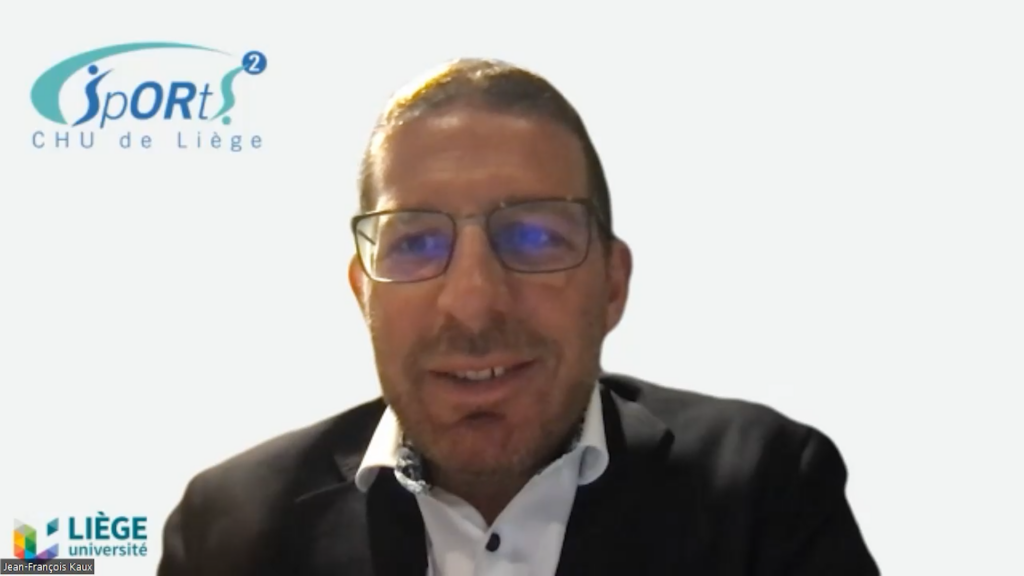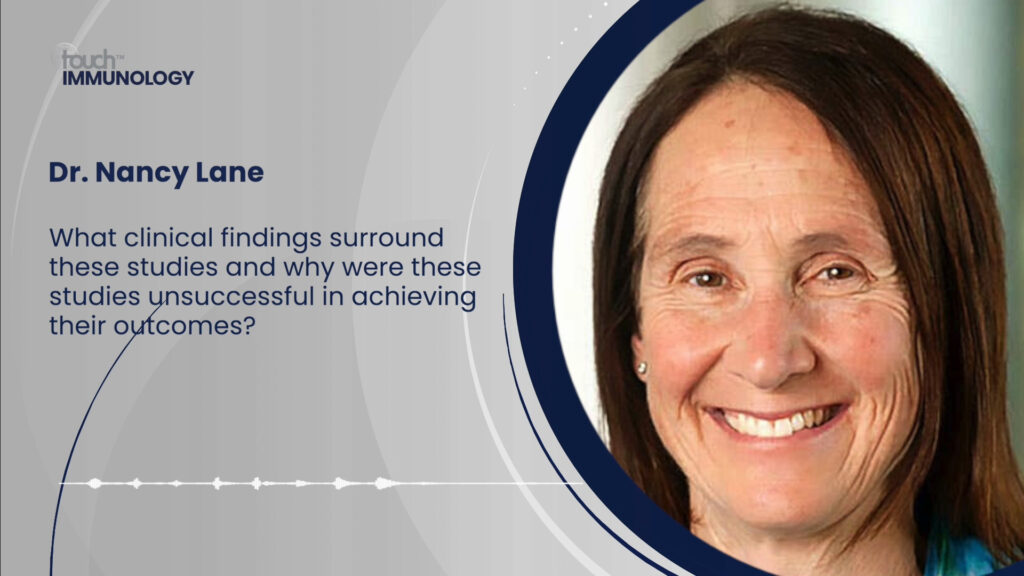 LEVI-04 is a novel, first-in-class, neurotrophin-3 (NT-3) inhibitor being investigated for the treatment of knee osteoarthritis (OA).1 It works by targeting the neurotrophin pathway, supplementing a circulatory protein which binds excess neurotrophins, which are elevated in osteoarthritic joints. The goal of treatment with Levi-04 is primarily to alleviate pain and improve physical function. A phase II, randomized, double-blind, placebo-controlled study investigated the efficacy and safety of LEVI-04 in adults with knee OA (NCT05618782).2
LEVI-04 is a novel, first-in-class, neurotrophin-3 (NT-3) inhibitor being investigated for the treatment of knee osteoarthritis (OA).1 It works by targeting the neurotrophin pathway, supplementing a circulatory protein which binds excess neurotrophins, which are elevated in osteoarthritic joints. The goal of treatment with Levi-04 is primarily to alleviate pain and improve physical function. A phase II, randomized, double-blind, placebo-controlled study investigated the efficacy and safety of LEVI-04 in adults with knee OA (NCT05618782).2
The findings from the phase II study were presented at this year’s World Congress on Osteoporosis, Osteoarthritis and Musculoskeletal Diseases (WCO-IOF-ESCEO; 10–13 April, 2025; Rome, Italy).3 In this interview, we speak with Principal Investigator, Professor Philip Conaghan (NIHR Leeds Biomedical Research Centre, Leeds, UK) around the mechanism of action of LEVI-04, the efficacy and safety findings from the phase II study, how the profile of LEVI-04 compares to the current standard-of-care, and the next steps in its clinical development.
Q. What is the benefit of primarily targeting the NT3 pathway rather than the NGF pathway?
Nerve growth factor (NGF) and NT-3 belong to a family of neurotrophins that regulate peripheral pain pathways. NGF binds to tropomyosin receptor kinase A (TrkA) and p75 neurotrophin receptor (p75NTR), while NT-3 binds to all neurotrophin receptors (TrkA, TrkB, TrkC and p75NTR), with highest affinity for TrkC and lowest affinity for p75NTR. Inhibiting either of these neurotrophins provides analgesia, but inhibition of NGF has been associated with deleterious effects on joints, likely due to inhibiting NGFs’ normal role in regulating bone cells, influencing osteoblast and osteoclast differentiation, and osteocyte activity, as well as homeostasis of articular chondrocytes.
NT-3 also has a prominent role in cartilage and bone metabolism, inducing osteoclastogenesis and resorptive activity, leading to cartilage removal. Anti-NGF studies have shown that maintaining adequate NGF levels are important for maintaining bone health. In contrast, inhibiting excess NT-3 may be beneficial in OA joints, which will be further explored in subsequent clinical trials. In health, circulating p75NTR exceeds circulating NTs. LEVI-04 mimics this by supplementing p75NTR, binding excess NTs, with the highest affinity for NT-3 and lowest for NGF, restoring homeostasis of this system. In simple terms, you could also say NT3 is the ‘bad guy’ in pain and inflammation and NGF the ‘good guy’, so by blocking NT3 we remove its negative effects (pain and poor function) while preserving the positive effects of NGF (in a controlled way – because we also know that too much NGF causes pain).
Q. What is the mechanism of action of LEVI-04?
LEVI-04 is a p75NTR fusion protein that provides analgesia via supplementation of the endogenous p75NTR binding protein and inhibition of NT-3 activity.
Q. What were the efficacy findings from the phase II study?
We saw significant and clinically meaningful improvements in pain and function across all of the efficacy measures, including WOMAC* pain, WOMAC function, average daily pain, which showed more dose response than the others. We saw a very small dose response for WOMAC in the primary endpoints, but all three doses of LEVI-04 that we tried were positive and at levels that are clinically meaningful, the effect sizes in terms of pain relief were up there with what we’ve seen with NSAIDs and a bit better.
For some of the secondary measures, the patient global assessment and the step test (which is an objective measure of function where you have everybody doing the same test) we saw really good results for all doses, a slight trend to better results with the two higher doses used, but all three had important benefits.
Q. How do these findings compare with current standard treatments for knee osteoarthritis?
One of the things we always say is that you shouldn’t compare directly across trials (e.g., because of different inclusion criteria), but we tend to look at the effectiveness of various therapies. The trial showed significant and clinically meaningful improvements in its primary WOMAC pain and all pain and function outcomes across a range of efficacy measures, including on a movement-evoked pain model, with the higher two doses at or above the efficacy of NSAIDs.
It’s likely that any new therapies coming into the market now will be used in people who have failed NSAIDs, can’t tolerate them or shouldn’t be on them because of contraindications, so we talk about NSAID equivalence to give clinicians an idea of what they might be getting out of the drug. I think the placement of any new therapies will be after NSAIDs, because NSAIDs are plentiful, cheap and are already out there.
Q. Could you give an overview of the safety profile of LEVI-04, including effects on joint structure?
There was no increased evidence of serious adverse events. In terms of the events of special interest, we looked at those related to joint pathologies. It was comforting to see that the number of joint pathologies we saw for each of the three doses was similar to placebo. In particular, there were no cases of rapidly progressive osteoarthritis (RPOA)-2, which is the more destructive type of bony problem that we saw with the NGF inhibitors.
There were a couple of cases of peripheral paraesthesia, which were reversible on drug cessation and we expect to see a few of those where nerve transmission is being affected. That to me is almost part of the proof-of-concept that the drug is working properly, but thankfully cases occurred in small numbers and were reversible.
Q. What are the next steps in the development of LEVI-04, and what additional studies are planned to further assess long-term efficacy and safety?
We’re currently planning phase III trials, and we know that they need longer durations of treatment. One of the big questions here is that we had good safety signals in seventeen weeks of treatment with thirty weeks of follow-up – now we want to see what a year of treatment is going to do. So there’s going to need to be longer treatment times and more numbers of participants treated.
* Western Ontario and McMaster Universities Arthritis Index (WOMAC)
References:
- Kaufman MB. LEVI-04 Promising for Relieving Knee OA Pain. The Rheumatologist. 2024. Available at: https://www.the-rheumatologist.org/article/levi-04-promising-for-relieving-knee-oa-pain/ (accessed: 17 April 2025).
- ClinicalTrials.gov. Clinical Trial to Evaluate the Efficacy and Safety of LEVI-04 in Patients With Osteoarthritis of the Knee. ClinicalTrials.gov ID: NCT05618782. Available at: https://clinicaltrials.gov/study/NCT05618782 (accessed: 17 April 2025).
- Philip Conaghan. Results From A Randomised Controlled Phase Ii Trial With Levi-04, A Novel Neurotrophin-3 Inhibitor, Demonstrate Substantially Improved Pain And Function Without Deleterious Effects On Joint Structure In People With Knee Osteoarthritis. Presented at WCO-IOF-ESCEO 2025, Rome, Italy. 10–13 April, 2025.
Further content in osteoarthritis.
Editor: Victoria Jones, Senior Content Editor.
Disclosures: This short article was prepared by touchIMMUNOLOGY in collaboration with Philip Conaghan, utilizing AI as an editorial tool (ChatGPT (GPT-4o) [Large language model]. https://chat.openai.com/chat.) The content was developed and edited by human editors. No fees or funding were associated with its publication.
Conflicts of interest: Philip Conaghan discloses consulting for Alfasigma, Eli Lilly, Eupraxia, Formation Bio, Genascence, GSK, Grunenthal, Janssen, Kolon TissueGene, Levicept, Medipost, Moebius, Novartis, Orion, Pacira, Stryker and Takeda, and participating in speaker’s bureaus with AbbVie and Sandoz.
SIGN UP to TouchIMMUNOLOGY!
Join our global community today for access to thousands of peer-reviewed articles, expert insights, and learn-on-the-go education across 150+ specialties, plus concise email updates and newsletters so you never miss out.











